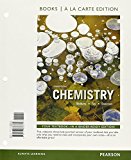
Interpretation:
The solubility product of a sparingly soluble salt can be obtained from the cell potential value of the cell made by the cation and anion.
Concept introduction:
- Solubility product: For the sparingly soluble salt (AB) in the solution of the salt (AB) maximum portion of the salt remains in un-dissociated form. So in this solution there remain an equilibrium:
- Cell potential with equilibrium constant: The equilibrium constant and formation constant of a reaction can be determined from the cell potential by the use of Nernst equation: Let assume a reaction:
- Cell reaction in shorthand notation: The cell reaction of a galvanic cell can be represented in a symbolic manner, where the left hand side is the oxidation half cell (anode) and right hand side is the reduction half cell (cathode). The anode is represented as
AS the maximum portion of the salt remains un-dissociated state thus the equilibrium can be re-written as-
So, the equilibrium constant of the reaction
As the concentration of [AB] is so high so it assumed to be constant. Then,
Thus the cell potential of the reaction from Nernst equation is:
Now at equilibrium the
Thus
Similarly the cathode represented as
Given:
The following galvanic cell has a potential of 0.578V at 25 oC:
To determine:
The solubility product (
Want to see the full answer?
Check out a sample textbook solution
Chapter 18 Solutions
Chemistry, Books a la Carte Edition and Modified Mastering Chemistry with Pearson eText & ValuePack Access Card (7th Edition)
 ChemistryChemistryISBN:9781305957404Author:Steven S. Zumdahl, Susan A. Zumdahl, Donald J. DeCostePublisher:Cengage Learning
ChemistryChemistryISBN:9781305957404Author:Steven S. Zumdahl, Susan A. Zumdahl, Donald J. DeCostePublisher:Cengage Learning ChemistryChemistryISBN:9781259911156Author:Raymond Chang Dr., Jason Overby ProfessorPublisher:McGraw-Hill Education
ChemistryChemistryISBN:9781259911156Author:Raymond Chang Dr., Jason Overby ProfessorPublisher:McGraw-Hill Education Principles of Instrumental AnalysisChemistryISBN:9781305577213Author:Douglas A. Skoog, F. James Holler, Stanley R. CrouchPublisher:Cengage Learning
Principles of Instrumental AnalysisChemistryISBN:9781305577213Author:Douglas A. Skoog, F. James Holler, Stanley R. CrouchPublisher:Cengage Learning Organic ChemistryChemistryISBN:9780078021558Author:Janice Gorzynski Smith Dr.Publisher:McGraw-Hill Education
Organic ChemistryChemistryISBN:9780078021558Author:Janice Gorzynski Smith Dr.Publisher:McGraw-Hill Education Chemistry: Principles and ReactionsChemistryISBN:9781305079373Author:William L. Masterton, Cecile N. HurleyPublisher:Cengage Learning
Chemistry: Principles and ReactionsChemistryISBN:9781305079373Author:William L. Masterton, Cecile N. HurleyPublisher:Cengage Learning Elementary Principles of Chemical Processes, Bind...ChemistryISBN:9781118431221Author:Richard M. Felder, Ronald W. Rousseau, Lisa G. BullardPublisher:WILEY
Elementary Principles of Chemical Processes, Bind...ChemistryISBN:9781118431221Author:Richard M. Felder, Ronald W. Rousseau, Lisa G. BullardPublisher:WILEY





